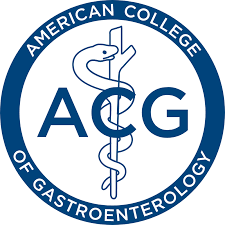Article
ACG Updates Clinical Guidance on Diagnosing Celiac Disease
Author(s):
The guidelines include advocating for more preventative care and changing how the disease is diagnosed.

New recommendations for the evaluation and management of celiac disease call for a combination of noninvasive serology tests and duodenal biopsies to confirm the diagnosis of celiac disease in both pediatric and adult patients.
A team, led by Rubio-Tapia, Alberto, MD, Division of Gastroenterology, Hepatology, and Nutrition, Digestive Disease and Surgery Institute, Cleveland Clinic, updated the clinical practice guidelines for celiac disease to reflect new data from a broad spectrum of clinical practice, including indication for celiac disease testing, diagnostic strategies for patients on a gluten containing diet or following a gluten-free diet, and the role of biopsy for confirming a celiac disease diagnosis.
The New Guidelines
The team now recommends esophagogastroduodenoscopy (EGD) with multiple duodenal biopsies to confirm the diagnosis, along with a combination of high-level TTG IgA (>10× upper limit of normal) with a positive endomysia antibody (EMA) in a second blood sample as a diagnostic test for pediatric patients.This could also be considered for symptomatic adults unwilling or unable to undergo upper gastrointestinal endoscopies.
The investigators also focused on indications for gluten challenge and genetic testing, the general approach to management, preventative care with vaccination, monitoring gluten free diet adherence including the discussion of gluten detection devices, probiotics, goals of therapy, and outcomes, and the differential diagnosis for nonresponsive celiac disease in the guidelines.
The reccomendations also suggest setting a goal for intestinal healing as the end point of a gluten free diet.
“We advocate for individualized discussion of goals of the GFD with the patient beyond clinical and serological remission,” the authors wrote.
Celiac Disease
The challenge with celiac disease is there are a wide spectrum of manifestations that can often resemble a multisystemic disorder. However, the detection of celiac disease specific antibodies in the serum could be the optimal screening tool and while the majority of patients require intestinal biopsies, it can be an invasive procedure, showing the need for nonbiopsy strategies in clinical practice guidance.
“The primary concern about advocating a nonbiopsy approach for adults is the relative paucity of data regarding the positive predictive value of serology in adults, as compared with the more extensive body of literature in children,” the authors wrote.
It is also difficult to measure the burden of celiac disease, largely because the prevalence of undiagnosed asymptomatic individuals and that there are no prescription medications approved by the US Food and Drug Administration (FDA).
To treat the disease, the majority of clinicians suggest strict adherence to a gluten free diet. While response rates are high for this diet, individuals who do not respond require a systematic workup that rule out specific conditions that could cause persistent or recurrent symptoms, particularly unintentional gluten contamination.
The Need for New Guidance
The guidelines represent an update to the 2013 American College of Gastroenterology Guideline on the Diagnosis and Management of Celiac Disease.
The concern and need for better diagnostics comes at a time where the incidence of celiac disease is rising, which is generally attributed to increased awareness and testing and an increase in autoimmunity.
Future Research
The authors suggested areas where future research should focus on, including the appropriate cutoff for serologic values that provide acceptable positive predictive value for diagnosing the disease in adults and whether positive predictive value of serologies vary based on the patient’s symptomatology and the coexistence of other autoimmune disease.
The investigators also want to look at the downstream effects in clinical practice of offering a nonbiopsy diagnosis strategy and whether a nonbiopsy diagnosis could have an impact on the adherence to the gluten free diet.
While it is estimated that 3 million in the US have celiac disease based on seroprevalence studies, the National Ambulatory Medical Care Survey found only 190,381 office visits associated with diagnostic codes for the disease occurred in 2014.
“At the same time, disease burden has been estimated as considerable based on economic analyses measuring the cost associated with outpatient care among patients diagnosed with CD,” the authors wrote. “At the same time, disease burden has been estimated as considerable based on economic analyses measuring the cost associated with outpatient care among patients diagnosed with CD.”
The study, “American College of Gastroenterology Guidelines Update: Diagnosis and Management of Celiac Disease,” was published online in The American Journal of Gastroenterology.





